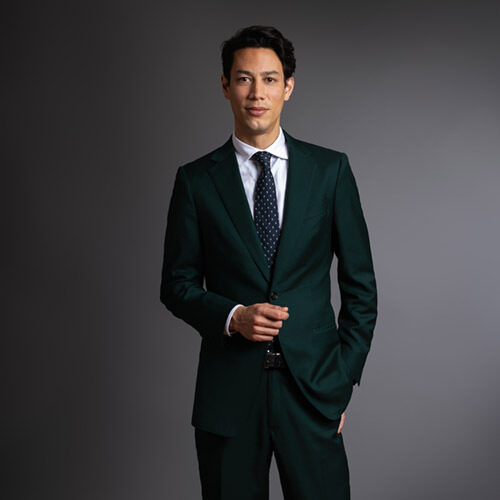- Autumn 2024
- Inculpatory and exculpatory evidence in a co-accused trial

Huxley v The Queen [2023] HCA 40
In Huxley v The Queen [2023] HCA 40, the High Court considered whether a jury in a joint trial was misdirected with respect to the evidence of a witness (Greer) that was exculpatory to one co-accused (Huxley), but inculpatory to another co-accused (Rewha).
The impugned direction was said to have directed the jury that they could only use Greer’s evidence if they were satisfied beyond reasonable doubt that it was truthful, reliable, and accurate: at [35]. This was argued by Huxley to be correct in Rewha’s case (where Greer’s evidence was the only evidence inculpating Rewha) but wrong in Huxley’s case where Greer’s evidence gave rise to a reasonable hypothesis consistent with innocence.
The Crown conceded that if the jury had in fact been left with that impression the appeal would have been successful, but argued that in the context of the summing up as a whole, the impugned direction was only applicable to the case of Rewha; or, if the impugned direction applied to the case of Huxley, the effect of the direction was corrected by the balance of the summing up: at [37].
The appeal was dismissed by majority, holding that the jury would not have inferred that the impugned direction applied to all uses of Greer’s evidence in the joint trial: at [62]–[67].
Background
The prosecution alleged that Rewha assaulted the deceased, causing actual bodily harm in company. The Crown case was that the following day Huxley murdered the deceased.
The evidence of Greer was essential to Rewha’s conviction as it was the only evidence that the deceased had travelled to a particular unit, that the deceased was assaulted in that unit, and that Rewha was present at the unit during the assault: at [49]. That same evidence was relevant to Huxley’s defence as it included evidence that Huxley was not at the unit at the time of the assault and shed light on the severity of the assault such that it could have led to the death of the deceased: at [55]. This evidence was said to have created a reasonable doubt about Huxley’s guilt for the charge of murder.
Greer was a reluctant witness: at [52]. She had also consumed significant quantities of methylamphetamine combined with alcohol on the day of the alleged assault: at [51].
Consistently with s 632(3) of the Criminal Code (Qld) and Robinson v The Queen (1999) 197 CLR 162 (at [170]–[171]), the jury was given a direction to the effect that Greer’s evidence must be scrutinised with care. The jury was directed accordingly:
You should only act upon her [Greer’s] evidence if, after considering her evidence with the warning that I have given in mind, and all the other evidence in the trial, you are convinced of its truth and accuracy. In particular, consistent with the directions I will give you in relation to the case against Mr Rewha, as a matter of law, you should only act upon her evidence if you are satisfied beyond reasonable doubt that her evidence is truthful, reliable and accurate. If you are not satisfied beyond reasonable doubt that the evidence of Ms Greer is truthful, reliable and accurate, then you should disregard it. [emphasis added]
The High Court
The majority (Gordon, Steward, and Gleeson JJ) confirmed that in considering whether there has been a miscarriage of justice by instructions to the jury, the ultimate question is whether taken as a whole, the judge’s instructions deflected the jury ‘from its fundamental task of deciding whether the prosecution proved the elements of the charged offence beyond reasonable doubt’ (in accordance with Hargraves v The Queen (2011) 245 CLR 257: at [40]–[41]).
The majority held that on a textual analysis, the impugned direction would not have been understood by the jury to be relevant to their assessment of Huxley’s defence: at [62]–[67]. Further, to the extent that any members of the jury would have been left wondering, the majority held that by the conclusion of the summing up, the jury would have understood the direction to have only applied to Greer’s evidence in the case against Rewha: at [68].
The position of the majority was fortified by the fact that trial counsel had not sought that the jury be redirected after the delivery of the impugned direction. Referring to the comments of French CJ, Crennan, and Kiefel JJ in King v The Queen (2012) 245 CLR 588: at [55], the majority stated that:
[92] … a decision not to seek a redirection by defence counsel at trial, which may be made for a variety of reasons, ‘informs consideration of the extent to which, taken in context, the direction was likely to confuse or mislead the jury’ [citation omitted].
The majority took the view that notwithstanding an earlier exchange between counsel and the trial judge about the use of Greer’s evidence in the case against Huxley, and consequent ruling that the jury could only convict Rewha if they were satisfied beyond reasonable doubt that Greer’s evidence was accurate and reliable, trial counsel’s failure to seek a redirection after the impugned direction had been given provided support for the view that the jury would not have been confused or misled: at [93].
In dissent, Gaegler CJ and Jagot J opined that the impugned direction conveyed to the jury only that it could not use Greer’s evidence unless satisfied beyond reasonable doubt that it was truthful, reliable and accurate: at [23].
They found that the effect of the wrong direction was not corrected by anything said subsequently in further directions: [24]–[25]. Trial counsel’s failure to seek a redirection did not indicate that the error had been cured as he had already objected to the giving of the impugned direction and the trial judge had ruled on that objection: at [29].
The appeal was dismissed. BN

